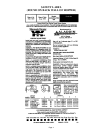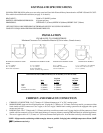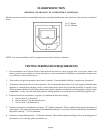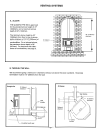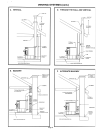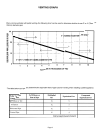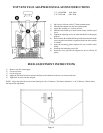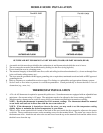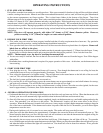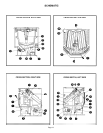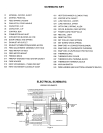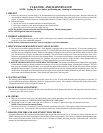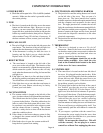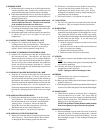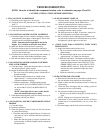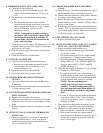OPERATING INSTRUCTIONS
1. FUEL SIZE AND MATERIAL
Fuel pellets are made from sawdust or wood byproducts. If the source material is hardwood, they will have a higher mineral
content, creating a heavier ash. Minerals and other noncombustible materials, such as sand, will turn into glass when heated
to the extreme temperatures our firepot reaches. This is what forms clinkers in the bottom of the firepot. Trees from
different areas will vary in mineral content. That is why some fuels produce more clinkers than others. Pellets are manufactured
in either 1/4" (6mm) or 5/16" (8mm) diameter and many varying lengths. Pellet lengths may even vary by lot from the same
manufacturer, which is why the feed rate may need to be adjusted occasionally. We recommend that you buy fuel in multi-
ton lots whenever possible. Buying large quantities of fuel at once will greatly reduce the number of times the feed adjustments
will need to be made. However, we do recommend trying various brands before purchasing multi-ton lots to ensure customer
satisfaction.
NOTE: This stove will operate properly with either 1/4” (6mm) or 5/16” (8mm) diameter pellets. However,
pellets exceeding 1 1/4” (32mm) in length can cause missed ignitions.
2. BEFORE YOUR FIRST FIRE.
a. First, make sure your stove has been property installed and that all safety requirements have been met. Pay particular
attention to the fire protection, venting and thermostat installation instructions.
b. Now open the front door of the stove and remove all of the accessories that were placed there for shipment. Remove all
labels that are affixed to the glass.
c. Check the position of the thermocouple and make sure that it protrudes approximately 1" (25mm) into the firepot. It may
be necessary to slide the thermocouple and protection tube into their proper positions. Now close the front door.
NOTE: Thermocouple cover tip must be touching thermocouple tip.
d. You are now ready to load fuel, but first see that all accessories have been removed from the hopper. Now fill the hopper
with pellets.
e. Remember that a working thermostat is required for proper operation of this stove. At this time, set the thermostat to its
lowest setting.
3. START YOUR FIRST FIRE
a. Now plug the stove in. The combustion blower will come on. Even though the thermostat is not calling for heat, the
combustion blower will stay on for approximately 10 minutes. This is normal.
b. Next, adjust the themostat to its highest setting. The red light next to the restart button on the left side of the stove will
come on. This will indicate that the thermostat is calling for heat.
c. The fuel feed system and the igniter are now turned on.
d. For your first fire, it will be necessary to press the restart button once at approximately two and a half minutes for start up,
and again at five minutes. This will fill the feed system and allow the stove to light.
e. The stove will now continue to run as long as the thermostat is calling for heat. Once the stove has ignited, let the stove
bum for approximately 15 minutes, then set the thermostat to the desired room temperature.
4. GENERAL OPERATION INFORMATION
a. Understand that the stove is like most modern furnaces in that it has only one burn rate, full on. When the thermostat calls
for heat, your stove will automatically light and deliver heat in the most efficient and economical way.
b. Once all of the start-up procedures have been completed, simply set the thermostat to a comfortable setting and enjoy the
stove. But remember, you will have to add pellets. The thermostat’s location will have some effect on the stove’s
operation. When the thermostat is located close to the stove, it may require a slightly higher temperature setting to keep the
rest of the house comfortable. If the thermostat location is upstairs while the stove is downstairs, you will notice higher
temperatures near the stove.
c. During each ignition cycle, it is normal to see some smoke. The smoke will stop once the fire starts.
d. After your stove has been burning for approximately 15 minutes, the convection blower will automatically turn on. This
blower transfers heat from your stove into the room, and will continue to run after the thermostat has stopped calling for
heat until all of the heat has been extracted from the stove.
e. Occasionally, the stove may run out of fuel and shut itself down. If this happens, the red light will be on. To restart the
stove, fill the hopper and press the restart button next to the light. When you press the restart button the red light will go out,
and when the button is released the light will come back on. You should see a fire in about four minutes. If not, press the
restart button again.
Page 12



